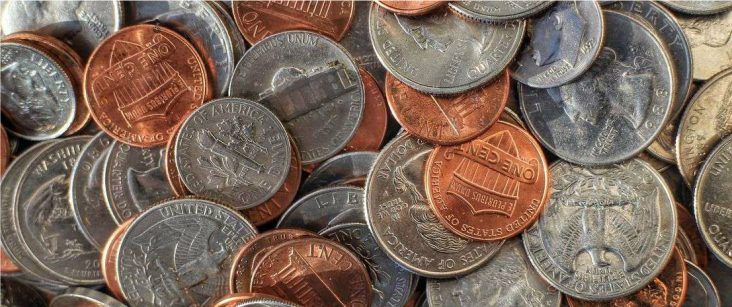State revenue collections take hit in January as Gov. Hutchinson’s tax cut bill sails through committee
by February 4, 2019 2:02 pm 570 views

As the legislature quickly moved forward with Gov. Asa Hutchinson’s $97 million tax cut proposal Monday (Feb. 4) at the State Capitol, general revenue collections for January came in well below year ago levels and the state’s own forecast due to the 2017 corporate tax reform package approved by Congress.
For the month of January, net available revenues were $554.1 million, down 5% or $29.2 million from a year ago and $13 million or 2.3% below forecast, according to the monthly revenue summary from the state Department of Finance and Administration (DF&A). January gross collections, a broader economic indicator that includes collections from all available categories, also fell by 4%, or $25.6 million, to $622.6 million from a year ago.
According to DF&A economist John Shelnutt, actual tax collections in January were -30.4% below a year ago in individual estimate tax payments versus the expected 15% decline in the forecast. That resulted in estimated tax payments coming in $17.6 million below forecast for the month, he said.
In Arkansas and across other states with income taxes, the same decline and forecast miss is playing out from the taxpayer strategy that involved extraordinary payments in January 2017 ahead of the Federal Tax Cuts and Jobs Act (TCJA) by high-income taxpayers and a sharp reduction in estimated payments this January, said Shelnutt, adding that January was the due date month for the 4th estimated payment for the 2018 tax year.
In addition, Shelnutt said historic declines in the stock market in the fourth quarter may have also been a factor in the final estimated payment reduction.
“Looking ahead, we see this as a one-time adjustment but we will continue to monitor and evaluate the implications for any further impact on state revenues,” he said.
The tepid revenue report hit the ground just ahead of the Senate Revenue & Taxation Committee offering a speedy “do pass” recommendation for Senate Bill 211, the legislation that puts forth Gov. Hutchinson’s abridged “5.9” plan that cuts the state’s marginal tax rate from 6.9% to 5.9% but in half the time than earlier thought.
The bill, sponsored by Sen. Jonathan Dismang, R-Searcy, who chairs the Senate tax panel, was surprisingly introduced by Hutchinson and top House and Senate leaders at a press conference last week to replace the former “2-4-5.9” tax cut package at a supposed cost savings of nearly $100 million.
Under the first year of the plan, beginning on Jan. 1, 2020, Arkansas taxpayers would see the traditional six-rate upper income tax bracket eliminated and replaced with a four-rate bracket of 2%, 4%, 5.9% and 6.6%. According to DF&A, the fiscal impact to the state’s revenue collections in the first year would be $51.2 million. That cost, however, would be split across the biennium in fiscal years 2020 and 2021.
In the second year beginning on Jan. 1, 2020, when the top marginal tax rate would then drop to 5.9%, the cost to the state’s budget would be $45.8 million. The expense of the second phase of the two-tiered tax cut would be split between fiscal years 2021 and 2022.
In a side-by-side comparison, Hutchinson’s proposal is substantially different than the 2-4-5.9 proposal that was laid out ahead of the 92nd General Assembly. In November, Hutchinson’s $5.75 billion budget request for fiscal 2020 called for an increase of 2.3%, or $125 million above the fiscal 2019 budget of $5.6 billion, which ends June 30, 2019. The 2021 fiscal budget request would rise another 2.3% to nearly $5.88 billion.
At Monday’s committee hearing on SB 211, Dismang and his House counterpart, Rep. Joe Jett, R-Success, introduced the governor’s tax cut bill to the eight-member panel in the crowded Old State Supreme Court Room. In speaking for the bill, Dismang told the panel that his final “compromise bill” came from weeks of negotiations between the legislative and the executive branches.
“It’s a two-phase bill and it predominantly deals with the upper income tax table that we now have,” Dismang told the panel. After his brief introduction of SB 211, there was no discussion or any speaking for or against the bill, and the committee quickly approved the measure in a unanimous voice vote.
Today, seven months through fiscal year 2019 that began on July 1, 2018, Arkansas’ budget coffers now total net available general revenues of $3.41 billion year to date, which is $134 million or 4.1% ahead of year ago levels and $3.9 million or just 0.1% above the state’s official forecast.
Yearly gross general collections increased by $112.2 million, or 3% to $3.88 billion compared with the same period of fiscal 2018, and $7.9 million, or 0.2%, above the revised general forecast.
Among the major categories, individual income tax collections in January fell by $41 million or 10.7% to $342.2 million compared to a year ago, which is $22 million, or 6% below forecast. Year-to-date, individual income tax collections were up 0.8% or $15.2 million to $1.85 billion, which is $22.5 million or 1.2% below forecast.
Sales and use tax collections in January were $207.8 million, which were $1.2 million or 0.6% above year ago levels and $10.6 million or 4.9% below the state’s forecast. Year-to-date, sales and use tax revenue is up 3.6% at nearly $1.45 billion, which is $50.5 million ahead of last year and $9.6 million or 0.7% above forecast.
On New Year’s Day, Gov. Hutchinson’s $50.5 million tax cut for the working poor enacted in the 2017 legislature went into effect.
OTHER TAX REVENUE SOURCES
Alcoholic beverages
July-January 2019: $23.6 million
July-January 2018: $33 million
Games of skill
July-January 2019: $38.4 million
July-January 2018: $36 million
Tobacco
July-January 2019: $128.1 million
July-January 2018: $128.8 million
Insurance
July-January 2019: $45.2 million
July-January 2018: $44.4 million
